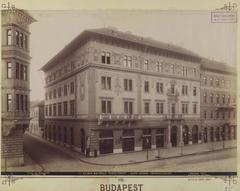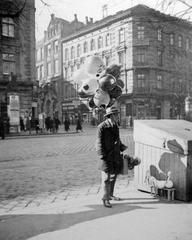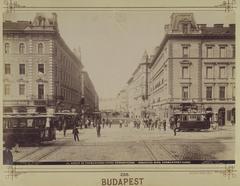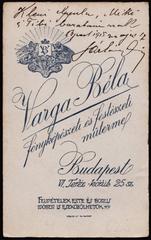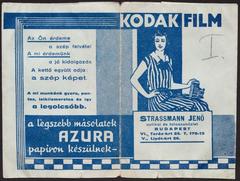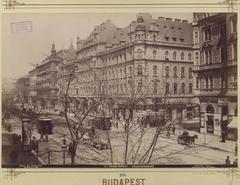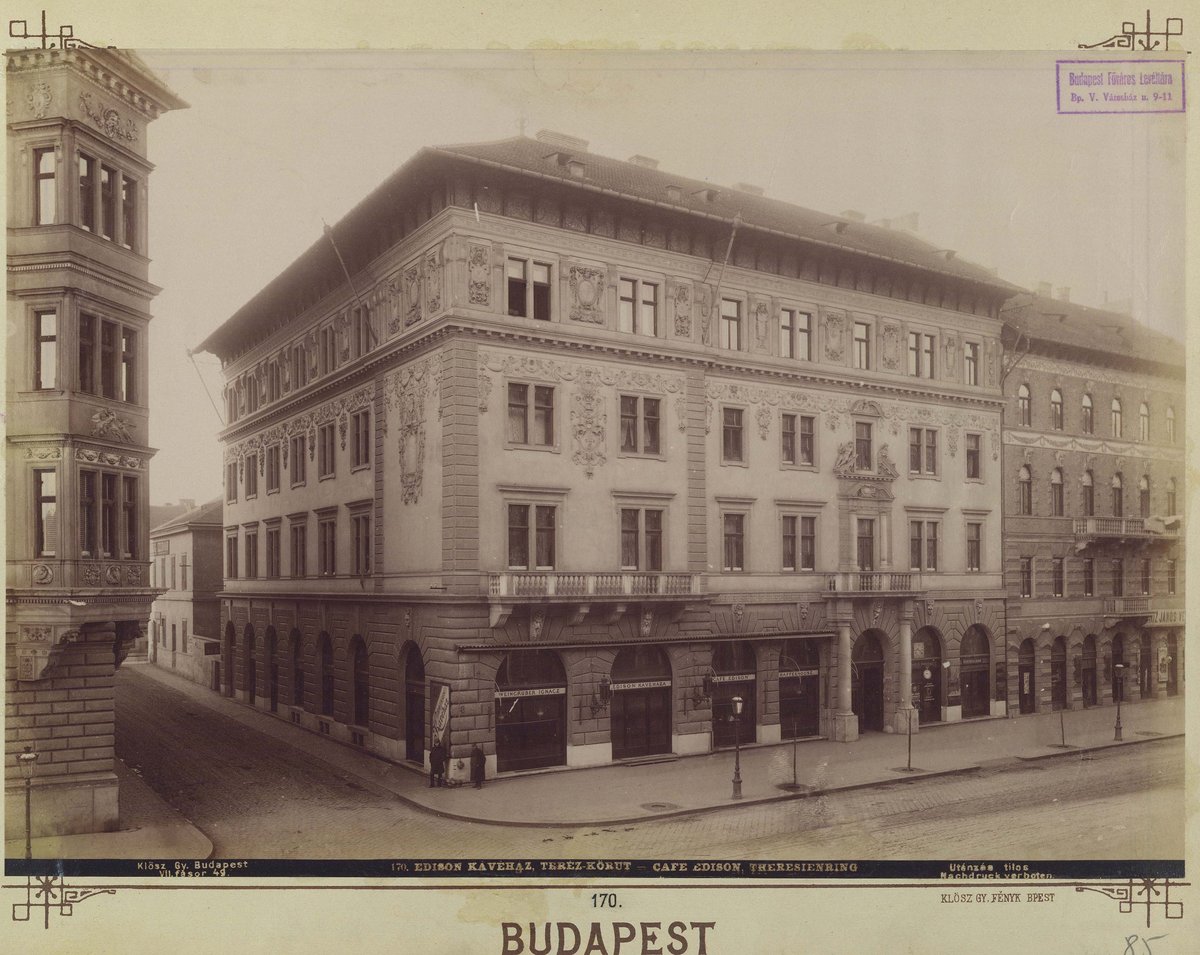
Teréz Boulevard Budapest: Visiting Hours, Tickets, and Historical Sites Guide
Date: 14/06/2025
Introduction to Teréz Boulevard Budapest and Its Significance
Teréz Boulevard (Teréz körút) is not only one of Budapest’s most iconic thoroughfares but also a vibrant showcase of the city’s architectural elegance, urban development, and cultural energy. As a key segment of the Grand Boulevard (Nagykörút), Teréz Boulevard encapsulates the ambitions of Budapest’s late 19th-century “golden age,” when the city underwent dramatic modernization inspired by Parisian and Viennese urban planning. Named after Empress Maria Theresa, the boulevard was designed to foster connectivity and growth, featuring a harmonious blend of Neo-Renaissance, Neo-Baroque, and Eclectic architecture. Today, its historic buildings, lively cafés, and proximity to major cultural attractions highlight its central role in Budapest’s urban and social life (pestbuda.hu; architektura-urbanizmus.sk; dailynewshungary.com; wikipedia).
This guide provides a detailed overview of Teréz Boulevard’s historical development, architectural highlights, cultural landmarks, and practical tips—including visiting hours, ticketing, accessibility, and transportation. Whether you’re drawn by Budapest’s history, eager to explore its museums and theaters, or simply want to experience its lively urban atmosphere, this resource equips you for a rewarding visit (yourcitybudapest.com; welovebudapest.com; budapestbylocals.com; travellingmandala.com).
Table of Contents
- Introduction
- Historical Background and Urban Development
- Visiting Teréz Boulevard: Practical Information
- Cultural and Artistic Landmarks
- Shopping, Gastronomy, and Nightlife
- Parks and Green Spaces
- Visitor Tips and FAQs
- Conclusion and Call to Action
- References
Historical Background and Urban Development
Origins and Planning
Teréz Boulevard emerged from Budapest’s ambitious 19th-century urban development following the Austro-Hungarian Compromise of 1867. The city’s population boom and desire to modernize led the Budapest Public Works Council (est. 1870) to design a semicircular Grand Boulevard, modeled after the grand streets of Paris and Vienna (pestbuda.hu; architektura-urbanizmus.sk). Regulatory plans for Pest began in 1872, eventually linking Buda and Óbuda by 1878. Despite economic setbacks, the boulevard officially opened in 1896, coinciding with Hungary’s Millennium celebrations (wikipedia).
Architectural and Urban Character
Teréz Boulevard is notable for its broad, 35–40 meter width, tree-lined medians, and rows of historicist apartment buildings. These late 19th-century structures feature elaborate facades, spacious courtyards, and ground-floor commercial spaces, reflecting the prosperity and cultural aspirations of Budapest’s bourgeoisie (dailynewshungary.com). Key intersections such as Nyugati tér and Oktogon anchor the boulevard’s urban landscape (wikipedia).
Socioeconomic Role
Teréz Boulevard quickly became a commercial and cultural artery, intersecting with major roads like Andrássy Avenue (a UNESCO World Heritage site) and providing a hub for social life. Tram lines 4 and 6, introduced in 1887, made it a vital transportation route—one of the busiest in Europe today, with about 200,000 daily passengers (wikipedia).
Modernization and Preservation
Budapest’s rapid growth brought challenges such as housing shortages and the need to balance tourism with local life (originalberlintours.com). Recent years have seen the restoration of historic buildings, upgrades to tram stations, and improved accessibility, ensuring Teréz Boulevard’s continued vitality and historic character (welovebudapest.com).
Visiting Teréz Boulevard: Practical Information
Hours, Tickets, and Tours
- Boulevard Access: Teréz Boulevard is a public street, open 24/7.
- Attractions: Museums, theaters, and galleries along the boulevard have individual opening hours (typically 10:00 AM–6:00 PM); check official websites for details.
- Tickets: Walking along the boulevard is free; tickets are required for most museums and performances. Guided walking tours are available and can be booked online or at tourist information centers.
Accessibility and Transportation
- Public Transport: Trams 4 and 6 run along the boulevard 24/7, with major stops at Nyugati tér and Oktogon. The M1 (Millennium Underground) metro line and Nyugati Railway Station provide further connectivity (travellingmandala.com).
- Pedestrian and Cyclist Access: Wide sidewalks and bike lanes make Teréz Boulevard ideal for walking and cycling. Bike rental stations are available nearby.
- For Visitors with Disabilities: The boulevard itself and many modernized venues are accessible, though some historic buildings may have limited access.
Photographic Spots and Events
- Best Views: Nyugati tér, Oktogon, and Andrássy Avenue offer excellent photo opportunities of historic architecture and vibrant street life.
- Special Events: Seasonal festivals, outdoor concerts, and exhibitions often take place along or near Teréz Boulevard; check event calendars for details (budapestbylocals.com).
Cultural and Artistic Landmarks
Hungarian State Opera House
Located just off Teréz Boulevard on Andrássy Avenue, the Hungarian State Opera House is a masterpiece of neo-Renaissance design by Miklós Ybl (1884). Its lavish interiors and superior acoustics make it a premier venue for opera and ballet (yourcitybudapest.com).
- Tours: Daily guided tours (10:00 AM–5:00 PM); tickets available online or at the box office.
- Performances: Book in advance for opera, ballet, and concerts.
- Accessibility: The opera house is wheelchair accessible.
House of Terror Museum
Situated at 60 Andrássy Avenue, this powerful museum chronicles Hungary’s 20th-century totalitarian regimes (yourcitybudapest.com).
- Hours: Tue–Sun, 10:00 AM–6:00 PM (closed Mondays).
- Tickets: 3,000 HUF; purchase onsite or online.
- Accessibility: Limited, due to historic structure.
Liszt Ferenc Square and Nagymező Street
Adjacent to Teréz Boulevard, Liszt Ferenc Square is a bustling café hub, while Nagymező Street (“Budapest Broadway”) is home to theaters such as the Budapest Operetta Theatre and Thália Theatre (budapestbylocals.com).
Shopping, Gastronomy, and Nightlife
Teréz Boulevard is part of the Grand Boulevard’s commercial axis, lined with international and local boutiques, bookstores, and artisan shops (budapestbylocals.com).
The area’s café culture thrives, with historic venues like the New York Café (on neighboring Erzsébet körút) and contemporary ruin bars in the nearby Jewish Quarter (travellingmandala.com).
Nightlife hotspots include Nagymező Street and the Jewish Quarter, offering live music, bars, and late-night eateries (info-budapest.com).
Parks and Green Spaces
Via Andrássy Avenue, Teréz Boulevard leads directly to City Park (Városliget)—a sprawling green space with attractions like Vajdahunyad Castle, Széchenyi Thermal Bath, and the Budapest Zoo.
- Park Access: Open 24/7; attractions within the park have individual hours and ticketing.
Visitor Tips and FAQs
Practical Tips
- Best Time to Visit: Spring and autumn for mild weather; summer for festivals and vibrant atmosphere.
- Safety: Generally safe, but be cautious with valuables in crowded areas.
- Currency: Hungarian Forint (HUF); credit cards are widely accepted.
- Language: English is common in tourist areas, but basic Hungarian phrases are appreciated.
Frequently Asked Questions
Q: What are the Teréz Boulevard visiting hours?
A: The boulevard is open 24/7; museums and venues have their own hours, usually 10:00 AM–6:00 PM.
Q: Are tickets required to walk along Teréz Boulevard?
A: No; entry is free, but museums and performances require tickets.
Q: Where can I buy tickets for the Opera House?
A: Online or at the box office on Andrássy Avenue.
Q: Is Teréz Boulevard accessible for visitors with disabilities?
A: Yes, most modernized public areas and transport are accessible; check venues for details.
Q: How do I reach Teréz Boulevard by public transport?
A: Use trams 4 or 6, the M1 metro, or Nyugati Railway Station.
Conclusion and Call to Action
Teréz Boulevard beautifully encapsulates Budapest’s historical evolution, architectural grandeur, and dynamic urban life. From the Hungarian State Opera House’s splendor to the poignant House of Terror Museum, and from lively cafés to major shopping hubs, this boulevard offers unforgettable experiences for every visitor.
To maximize your visit:
- Plan around attraction opening hours and secure tickets in advance.
- Take advantage of guided walking or food tours.
- Use the Audiala app for real-time info, tours, and ticket bookings.
Start your Budapest journey at Teréz Boulevard—where history, culture, and the vibrant city pulse come together in the heart of Hungary’s capital.
References and Further Reading
- Plans for a Metropolis: The Beginnings of Budapest’s Urban Planning, PestBuda
- Scientific Study on Budapest’s Urban Development, Architektúra & Urbanizmus
- Grand Boulevard (Budapest), Wikipedia
- Discover Secret Sights Along Budapest’s Grand Boulevard, We Love Budapest
- Budapest Grand Boulevard: Most Beautiful 100-Year-Old Buildings, Daily News Hungary
- Andrássy Avenue, Your City Budapest
- Budapest Attractions, Budapest by Locals
- Budapest Events, Budapest by Locals
- Budapest in June, Travelling Mandala
- Why is Budapest Famous?, Info-Budapest
- Budapest – A Quick History, Original Berlin Tours
